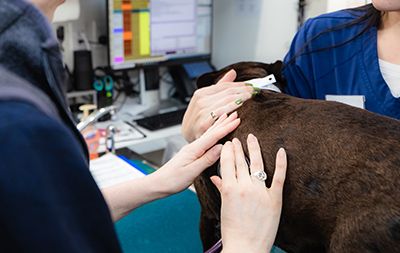What to Know When Your Cat Needs Anesthesia
A time may come when your cat requires a medical procedure to continue enjoying good health. As a pet parent, it is normal to worry when your furry family member needs a surgical procedure. During the surgery, your cat may need anesthesia to immobilize them.
At La Jolla Veterinary Hospital, we use a sedative to ensure that the animal does not experience pain or distress. The anesthesia will make the procedure easier for your cat. Here is what to know when your cat needs anesthesia.
Evaluation Before Anesthesia
Some steps occur before administering anesthesia before surgery. A pre-anesthetic evaluation involves a comprehensive physical exam, taking the cat’s health history, and conducting other tests.
Our vet will require a blood count, blood chemistry, and urinalysis to determine possible anesthesia risks. The evaluation will help determine the best anesthesia amount to reduce the chances of complications. Cats with pre-existing health conditions will have their anesthesia protocols adjusted to minimize risk.
Fasting Before the Procedure
The cat should fast the night before the anesthesia to help reduce the risk of vomiting or aspiration during the surgery. The fasting duration will depend on the feline’s age and the scheduled procedure time.
You may need to stop feeding your cat after 10 p.m. the previous night. Your cat may drink water, but make sure to follow our vet’s instructions. If your pet is diabetic, fasting may not be ideal, and the insulin levels may require adjustment.
Medication Before Anesthesia
The cat gets pre-anesthetic medication before intubation, while sedative and pain medication help keep it comfortable. We prescribe medication based on the feline’s health condition, the procedure, and the results of the pre-anesthetic evaluation.
A catheter is inserted for the cat to receive fluids during the surgery. The IV also helps in emergencies where medications need administration during or after the surgery. An eye ointment is necessary to keep the eyes lubricated while the cat is under anesthesia.
Administering the Anesthesia
While the cat is under sedation from the medications, the vet places a breathing (endotracheal) tube. It helps with the administration of anesthetic gas and oxygen. Our surgical team monitors the cat’s vital signs during anesthesia and surgery.
This includes monitoring the body temperature, heart rate, blood pressure, and oxygen saturation. Complications of cat anesthesia are very minimal with proper monitoring.
Recovering From Anesthesia
The recovery state is a critical part of the process, so constant monitoring of the cat’s vital signs is essential. It begins when our surgical team turns off the gas several hours after the procedure. Your cat should rest comfortably and breathe normally after the procedure.
Our veterinary staff has the training to recognize any potential complications. You will take your pet home when they are awake, with a body temperature back to normal.
You will receive post-surgical instructions to take care of your pet at home. The instructions will depend on the surgical procedure conducted. Your cat may be groggy or wobbly for some hours after the surgery, so you need to watch carefully.
For more on what to know when your cat needs anesthesia, visit La Jolla Veterinary Hospital at our office in La Jolla, California. Call (858) 454-6155 today to schedule an appointment.








